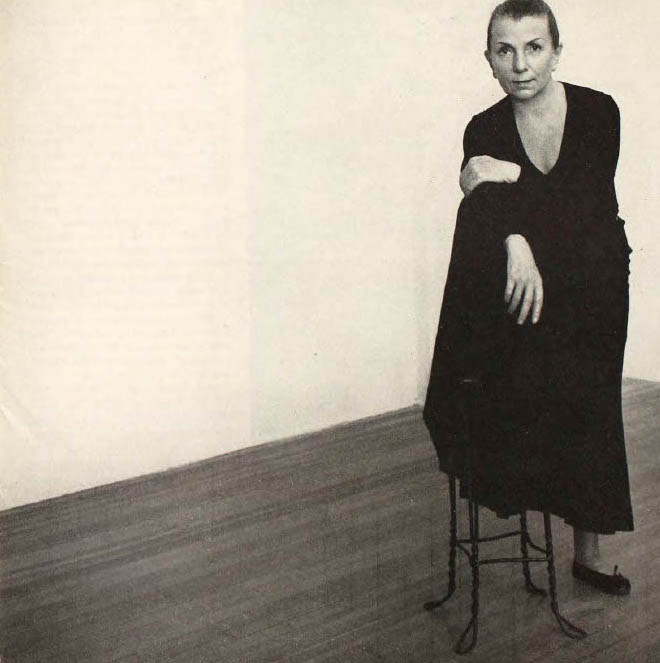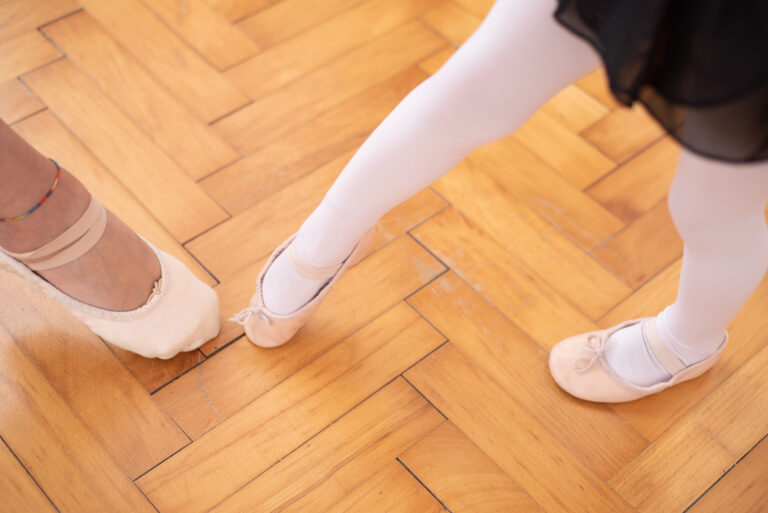
For San Francisco Bay Area–based tap teacher Micah Sallid, musicality is a skill to be practiced, just like time steps or paddle and rolls.
“Some people think that musicality is something that just comes to you or you’re born with it,” she says. “But I think it’s something that needs to be practiced all the time. This goes for both your students and yourself.”
And yet, as essential as learning musicality is, it can be an elusive concept for dancers, and an intimidating one for teachers. Here, Sallid shares five strategies for teaching musicality, for teachers of any genre.
Start simple.
Before tackling anything resembling rhythm, syncopation or complexity, start with the beat. A consistent tempo is at the foundation of most music students will encounter, so start your students off with simple drills.
For Sallid, that means having her students tap a basic four-count with their heels and toes, aiming to stay crisp and on tempo. This could look many ways, though—from dégagés on the beat in ballet to confident walks across the room in modern or jazz. “Start with a simple ‘1-2-3-4,’” says Sallid. “Once you understand that, then you can make it your own. It’s just basic counting.”
Add complexity.
Only after students have a strong kinesthetic understanding of the beat, start adding complexity. Sallid recommends starting with some “and”s: “1 & 2 & 3 & 4 &.” You can then break up the counts even further into triplets or 16th notes: “1-&-a, 2-&-a, 3-&-a, 4-&-a,” or “1-e-&-a, 2-e-&-a, 3-e-&-a, 4-e-&-a,” and shift where the accent in each rhythm is.
This could mean anything from triplets across the floor with polyrhythmic arm motions, complex rhythms in barre combinations, or layering increasingly intricate patterns on a basic toe/heel exercise, as Sallid does.
Vocalization is your friend.
“What I say to my students a lot is that tap is not only visual. You hear it and you speak it,” says Sallid. Like her teacher Arlene Kennedy before her, Sallid incorporates scatting and other rhythmic vocalizations into her classes to emphasize timing, accent and phrasing. If you’ve never done this before, start with just saying the counts out loud, emphasizing the accents with more force or volume.
Scatting or singing isn’t just handy as a teacher though. Sallid recommends having your students vocalize as well. Not only will students have another point of entry into the music, but as a teacher you’ll quickly hear their musical comprehension in their vocal delivery.
Sometimes a sing-songy phrase can get the rhythm across just as well scatting. Sallid remembers one her teacher Arlene Kennedy taught her: ‘I WANT to GO to the merry-go-ROUND’ for a shuffle exercise. The accents fell on the words: ‘want,’ ‘go’ and ‘round’ and the words conveyed a sense of cyclicality that lent itself to the quality of the shuffles.
Shake things up.
To challenge your students—and yourself—vary the music you use in class. “As teachers we sometimes fall into doing the same things over and over,” says Sallid. “It’s important to be a student as well as a teacher.”
Try different genres and give odd-metered (in time signatures that are more difficult to count, like 5 or 7) and mixed-metered (multiple time signatures) songs a try. “Creating a piece in 5s or 7s makes you a better choreographer and your students better listeners,” says Sallid. You’ll be able to recognize these types of music because you won’t be able to count in phrases of eight, as with most music used for Western dance genres. (If you’re able to get your hands on some sheet music, you’ll notice the time signature will be something like 5/8, 5/4, 7/8 or 7/4.)
Use visuals.
Familiarize students with what music looks like, too. You don’t need to divert a whole dance class for a music-theory lesson, but taking a moment to write out a musical phrase on a sheet of paper or a whiteboard can go a long way. You can write out the actual notes, use the rhythmic counting method (1 & 2 & 3 & 4 &), or make up your own visualization that makes sense for your students. Sometimes just seeing where the emphasis is in a phrase can make all the difference in a student’s comprehension.
You can also show them what musicality looks like in other dancers. Take a few minutes of class time to show students dancers who are known for their musicality and artistry. Sallid suggests tap dancer Sarah Reich and hip-hop dancer Keone Madrid.
Or, look to the greats for musical inspiration. Do some throwback lessons on the Nicholas Brothers for tap, Doris Humphrey for modern, Rudolf Nureyev for ballet or Fred Astaire for ballroom. Ask students: “What is it about them that makes them so interesting? What about their musicality made them famous?”




